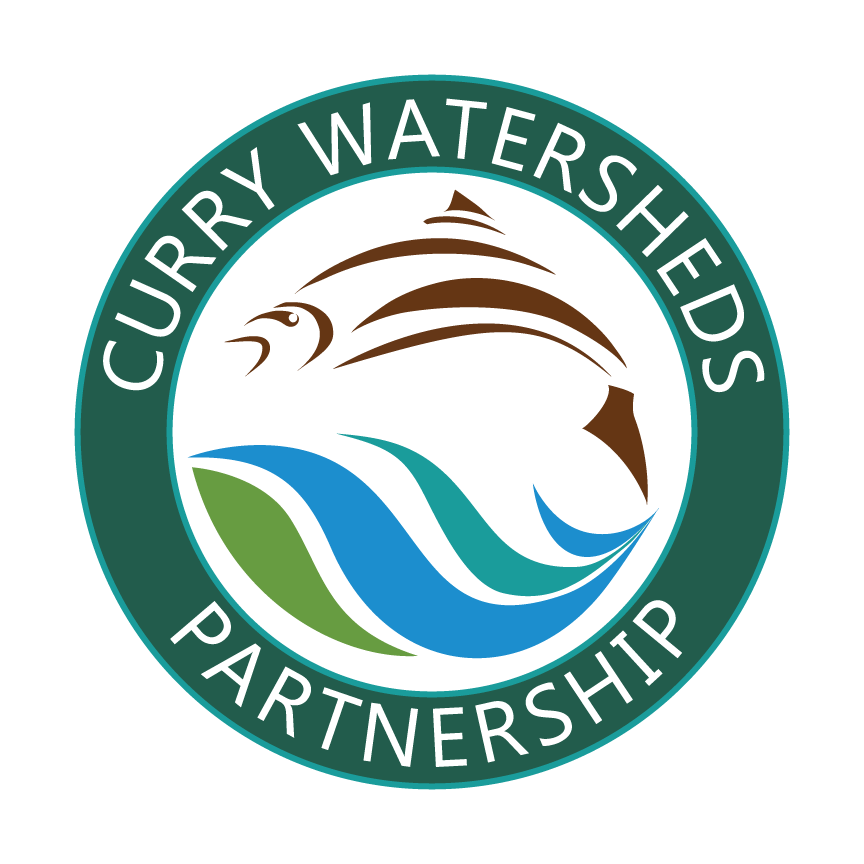What contributes to a healthy watershed for the south coast?
Many native species in our area move throughout watersheds during multiple phases of their lives. Sometimes past human actions can restrict that access, such as damming a stream and not providing fish access, or if a culvert under a road that is too small or steep to allow fish to pass through. We work to identify these potential barriers and fix as many of them as we can.
In-Stream Restoration
Fisheries scientists in the 1980s began to recognize that stream habitat had been simplified by past land use activities. Particularly those systems that had intensively logged watersheds seemed to be dominated by riffles with low pool frequency and lacked complexity. The range of stream restoration problems are diverse, and one restoration technique does not fix all issues. Often, a mix of stream treatments is needed.
Instream projects can help to improve streams by adding structures that mimic nature. Large wood structures can add complexity to the stream channel, provide shelter for juvenile and adult salmonids, reduce water temperatures, and help to prevent stream bank erosion. For example, if a creek has a heavily entrenched streambed, then it has little access to the floodplain (and slow water) during the winter. By adding large wood to the system, you can start to build back up the stream bed and create better connections. These large wood pieces capture smaller pieces of wood and gravel that come into the stream. The gravel can help to raise the channel up, providing better floodplain access and slowing the flow, creating sheltered habitat for salmonids.
The species that depend upon these ecosystems for their survival have, over millennia, evolved in response to the full range of flows and their interannual variability. Each species has developed life history traits that take advantage of specific flow levels, as well as the timing, duration, frequency, and rate of change of flow. In addition, flows that sustain healthy river, floodplain, and estuarine ecosystems also provide a wide range of ecosystem services that benefit people:
- provision of water and food supplies
- water purification and treatment
- flood mitigation
- soil fertility maintenance
- maintenance of coastal salinity zones
- provision of beauty and life-fulfilling values
- recreational opportunities
Riparian Restoration
- Food
- Shelter
- Shade
- Large Wood Recruitment
- Runoff Filtering
- Soil Stabilization
- Clean Water
The Curry Watersheds Partnership has been involved in riparian restoration projects since 1990’s. Many of the riparian areas in Curry County have been severely impacted by various land uses including timber harvest, agriculture, and urban development. Over time as the riparian area is encroached on and vegetation is removed stream channels begin to erode and simplify (which often leads to ditching by landowners). This is state of many of the small creeks on the southern Oregon Coast.
Numerous programs exist to assist landowners with resource concerns. See below for the Oregon Watershed Enhancement Board’s Small Grant Program and the Natural Resource Conservation Service Programs.
For Riparian work – Contact Drew Harper
Small Grant Program
The OWEB Small Grant Program awards grants up to $15,000 for on the ground watershed enhancement projects on the South Coast. The Small Grant payee must be the Curry Soil and Water Conservation District, but this entity can act on behalf of private landowners, not-for-profit institutions, schools, community colleges, state institutions of higher education, independent not-for-profit institutions of higher education, tribes, watershed councils, and local, state, or federal agencies.
The application deadlines for 2021-23 are listed in the bylaws.
Next Application Window Open: August 1-15, 2024
For more information on the small grant program, you can explore the sites/pages below:
For more information about the program, please contact Miranda Gray, miranda.gray@currywatersheds.org or 541-373-3127
Natural Resource Conservation Service Programs
Natural Resources Conservation Service’s (NRCS) Environmental Quality Incentive Program (EQIP) provides strategic technical and financial assistance for resource protection. Current strategies include forest health and Sudden Oak Death treatment assistance, and a new 2022 surface water quality protection strategy will promote healthy pasture cover and riparian buffers in selected watersheds.
The NRCS Oregon home page describes programs, Farm Bill, and Service Center locations. Click on an interactive map that shows active EQIP opportunities.
Farm Service Agency’s cooperative Oregon Conservation Reserve Enhancement Program (CREP) provides technical and financial support for restoring and protecting riparian buffers adjacent to agricultural ground.
For more information about the Oregon Conservation Reserve Enhancement Program in Coos and Curry Counties, contact the USDA Service Center at 382 North Central Blvd. Coquille, OR 97423.
541-396-2841. Select Option 2 for Farm Service Agency or Option 5 for the Curry SWCD CREP Technician (Barbara Grant).
